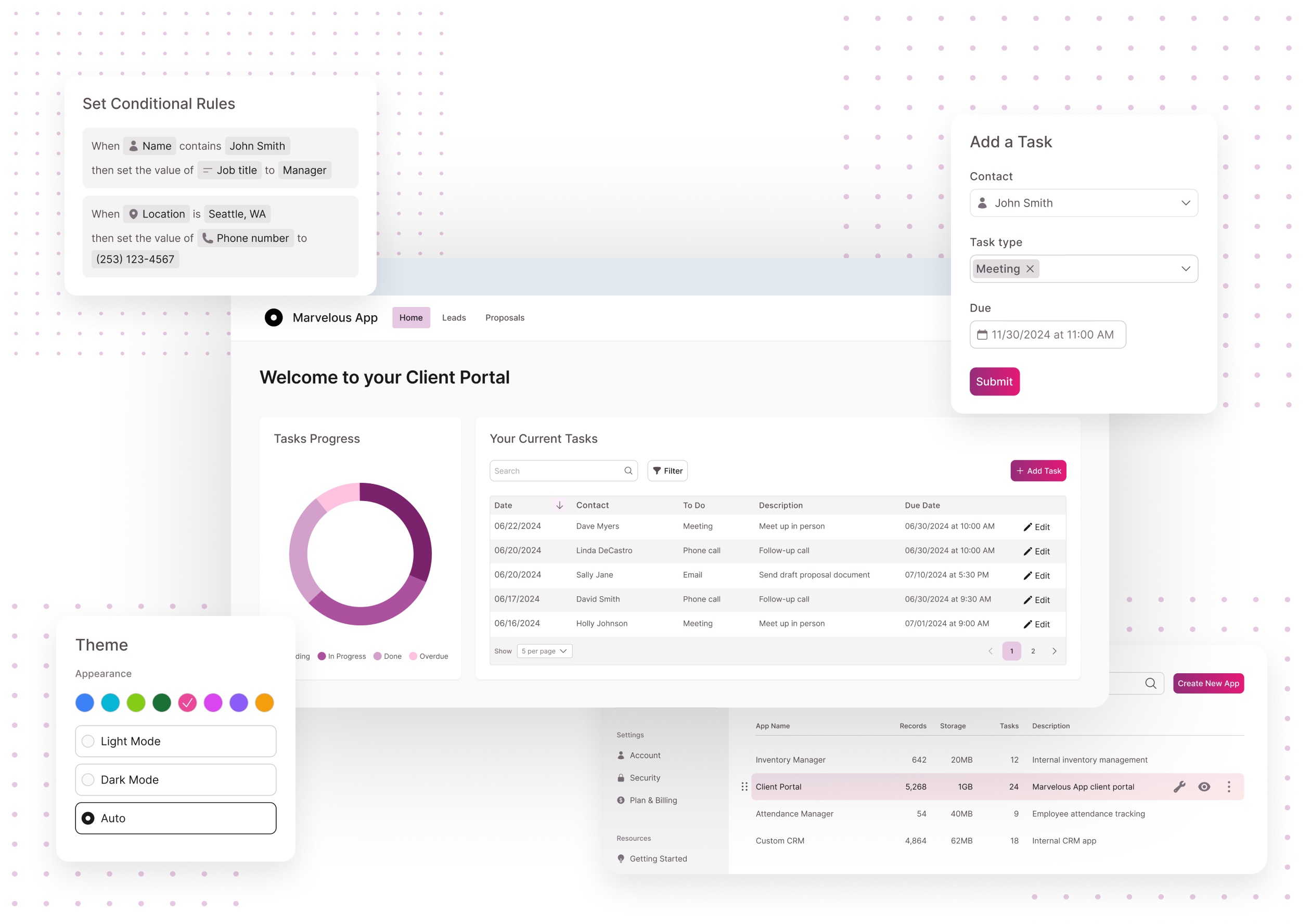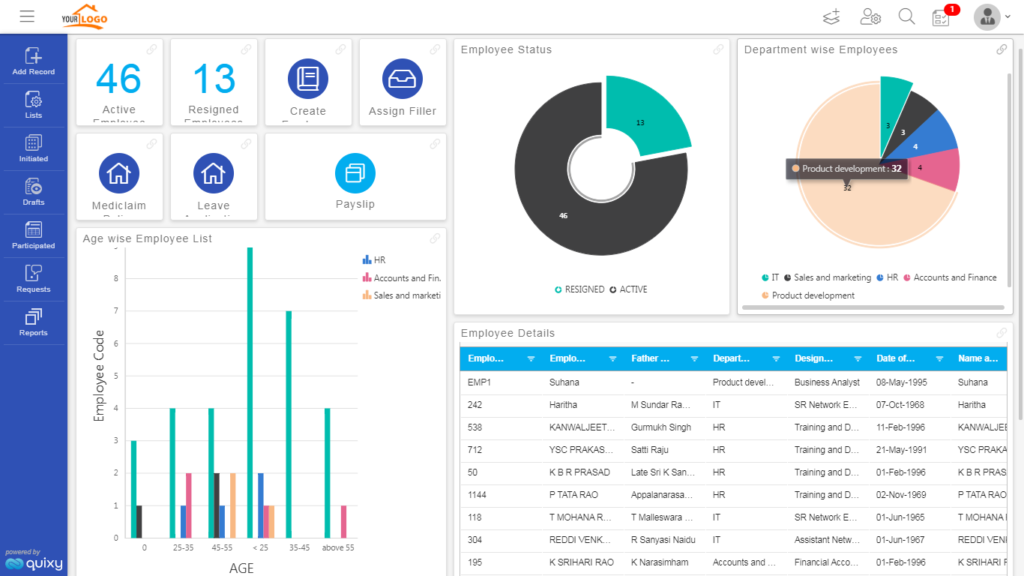Easy Open System Database Development Using No-Code Modern Technology
A Comprehensive Guide to Executing Scalable Data Sources Without the Requirement for Coding Proficiency
In the modern landscape of data administration, the ability to implement scalable databases without coding experience is ending up being significantly necessary for companies of all dimensions. This overview aims to brighten the procedure, focusing on straightforward tools and instinctive interfaces that demystify database setup. By analyzing vital attributes, effective approaches for application, and best techniques for recurring management, we will attend to just how even non-technical users can with confidence navigate this facility surface. What are the important aspects that can really encourage these users to take advantage of scalable databases successfully? The responses might redefine your method to data administration.
Recognizing Scalable Data Sources
In the realm of modern data management, scalable databases have arised as a critical option for companies looking for to deal with raising volumes of information efficiently. These data sources are made to suit development by enabling for the smooth enhancement of resources, whether with straight scaling (including a lot more machines) or vertical scaling (upgrading existing devices) This adaptability is vital in today's hectic electronic landscape, where data is created at an unmatched price.
Scalable databases usually make use of distributed architectures, which make it possible for information to be spread across several nodes. This distribution not just boosts efficiency but additionally gives redundancy, guaranteeing data schedule even in the occasion of equipment failings. Scalability can be an important variable for various applications, consisting of ecommerce systems, social media networks, and huge information analytics, where customer demand can vary considerably.
Additionally, scalable databases frequently include robust data consistency designs that balance efficiency and integrity. Organizations needs to consider their certain requirements, such as read and compose speeds, information stability, and fault resistance when selecting a scalable database option. Ultimately, recognizing the underlying principles of scalable data sources is essential for services intending to prosper in a significantly data-driven globe.
Trick Functions to Search For
When reviewing scalable data sources, several key functions are extremely important to guaranteeing ideal performance and integrity. Take into consideration the design of the data source. A distributed style can boost scalability by allowing information to be saved throughout multiple nodes, facilitating seamless data gain access to and processing as need boosts.
Another crucial attribute is information partitioning, which allows effective management of large datasets by separating them into smaller sized, much more convenient pieces (no-code). This strategy not only enhances performance yet likewise simplifies resource allotment
Additionally, try to find robust duplication capacities. This feature makes sure information redundancy and high availability, reducing downtime during upkeep or unexpected failures.
Efficiency tracking tools are likewise vital, as they offer real-time insights into system health and operational effectiveness, allowing for timely changes to preserve optimum efficiency.

User-Friendly Data Source Devices
Simplicity is a vital element in the design of straightforward data source tools, as it improves access for users with varying degrees of technical knowledge. no-code. These tools focus on instinctive user interfaces, allowing users to create, handle, and query databases without requiring substantial programming understanding
Trick attributes commonly include drag-and-drop performance, aesthetic information modeling, and pre-built design templates that improve the setup procedure. Such tools commonly provide directed tutorials or onboarding procedures that help with customer engagement and lower the knowing contour. Additionally, smooth assimilation with prominent information resources and services makes sure that users can quickly import and export information, further simplifying procedures.

Furthermore, durable support and community sources, such as online forums and documentation, enhance the customer experience by offering assistance when required. Generally, user-friendly database devices equip companies to harness the power of scalable try this data sources, making data monitoring obtainable to everybody involved.
Step-by-Step Application Guide
Just how can companies efficiently execute scalable databases to meet their growing information requirements? The procedure begins with identifying details data requirements, consisting of the volume, variety, and speed of information that will certainly be processed. Next off, organizations must evaluate easy to use database tools that supply scalability features, such as cloud-based solutions or managed data source solutions.
Once the right tool is picked, the next action includes setting up the data source environment. This includes establishing up circumstances, specifying customer consents, and establishing information structures that straighten with business purposes. Organizations must then move existing information into the brand-new system, guaranteeing data stability and marginal disruption to operations.
Post-migration, carrying out extensive testing is essential; this consists of performance screening under various tons problems to make certain the system can take care of future growth - no-code. Furthermore, it is very important to educate staff on the database administration user interface to assist in smooth use
Ideal Practices for Administration
Efficient administration of scalable data sources calls for a strategic approach that prioritizes ongoing monitoring and optimization. To achieve this, companies need to apply durable surveillance devices that supply real-time insights into database efficiency metrics, such as question action times, source usage, and transaction throughput. Consistently evaluating these metrics can help identify bottlenecks and areas for renovation.

Normal backups and catastrophe healing strategies are important to secure information honesty and availability. Establishing a regular for testing these backups will make sure a dependable healing procedure in instance of an unanticipated failure.
Furthermore, efficiency adjusting must be a continuous procedure. Adjusting indexing approaches, optimizing questions, and scaling resourcesâEUR" whether up and down or horizontallyâEUR" will assist maintain ideal efficiency as usage demands evolve.
Last but not least, promoting a society of understanding sharing amongst team participants will certainly enable constant learning and adaptation, making certain that the administration of scalable data sources stays reliable and effective in time.
Verdict
In conclusion, the application of scalable databases can be effectively accomplished without coding experience through the usage of user-friendly interfaces and easy to use devices. By sticking to the laid out strategies for configuration, data movement, and efficiency screening, people can browse the complexities of database administration easily. Stressing ideal techniques for recurring maintenance and collaboration further improves the capability to handle scalable data sources effectively in a quickly progressing data-driven setting.
In the modern landscape of information administration, the capacity to execute scalable databases without coding know-how is coming to be progressively necessary for organizations of all sizes.In the world of contemporary data monitoring, scalable databases have actually emerged as a crucial service for organizations seeking to handle increasing volumes of info successfully.Furthermore, scalable data sources often feature durable websites data uniformity versions that stabilize performance and integrity.Just how can companies properly implement scalable databases to satisfy their expanding data needs? Next off, organizations ought to examine user-friendly data source tools that use scalability attributes, such as cloud-based services or handled data source solutions.